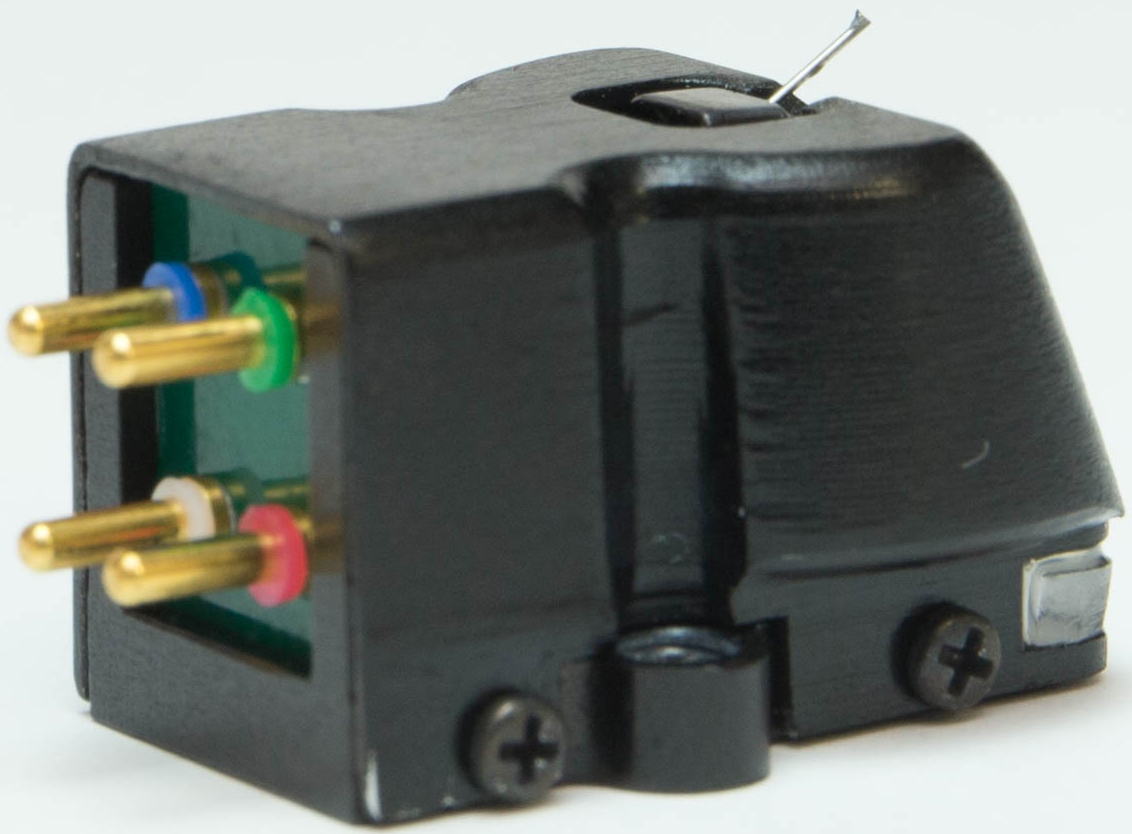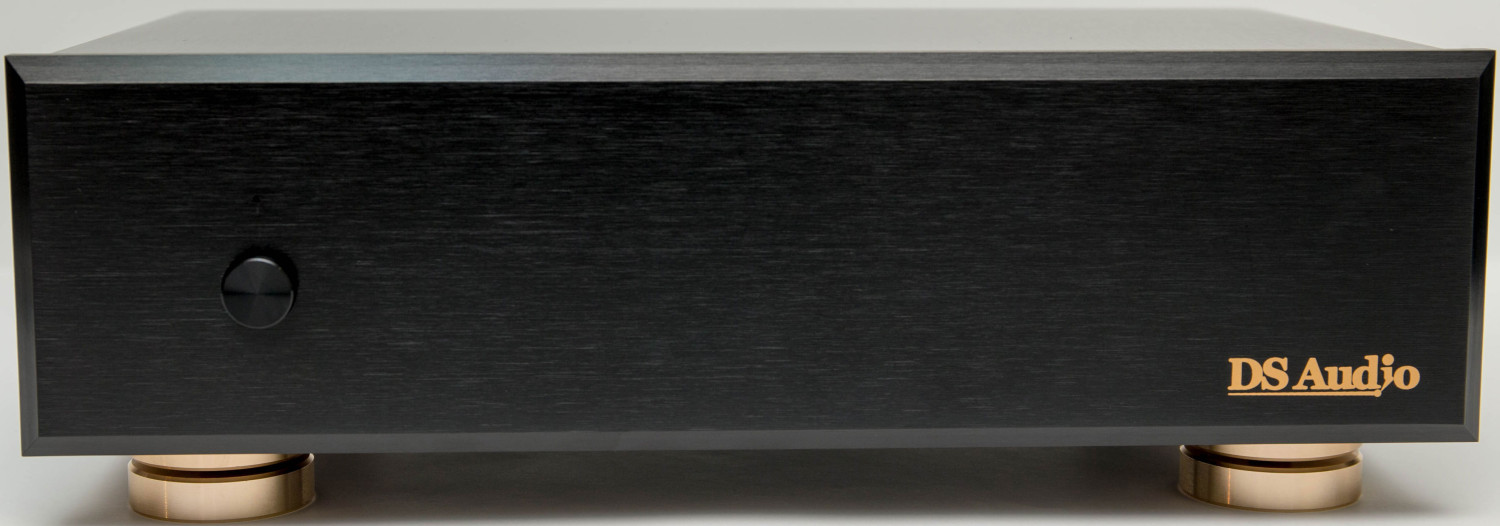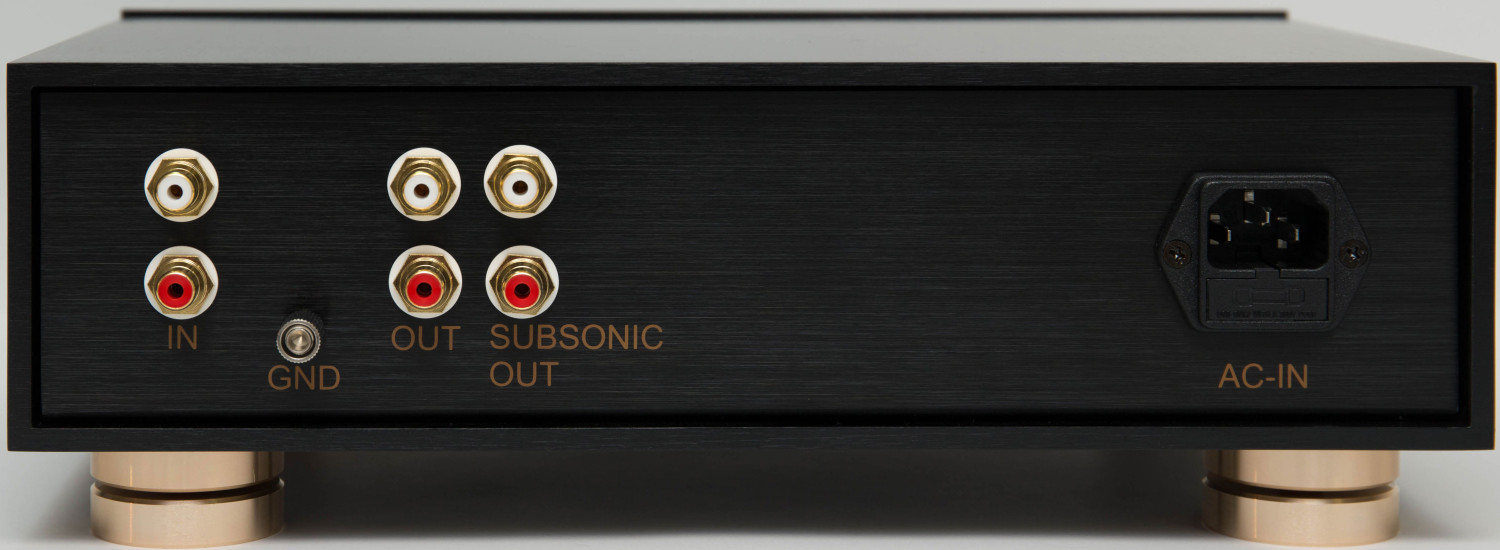Let me mention two things before I get started with the review. While visiting with Garth Leerer of Musical Surroundings, I said, “I can tell you this after living for three years with the Soundsmith Stain-gauge and now with the DS, I find these two cartridge technologies to be real alternatives to traditional magnetic cartridge. The reason is simple; You don’t need to fool with a phono preamp, a step up transformer and an active linestage. All of those devices add noise, hum and money to a system that a setup like a strain gauge or this optical cartridge don’t. This wouldn’t matter if magnetic cartridges were vastly better, but they are not. If you want to read more about why I feel that way, read my column “The Beatnik on the Best Way to Play LPs.”
Still, both Peter Ledermann of Soundsmith and Garth Leerer will tell you this isn’t the way most people see it. They know this because both sell vastly more magnetic phono cartridges. It seems most audiophiles are worried that something newer and better will come out, and they won’t be able to use it. The whole high-end audio industry is built around upgrading, but let me tell you a little secret my grandmother taught me; new and improved isn’t most often.
It is my understanding from Garth that this is the first review of the DS-W1 with the new version of output two from the EQ/Power Supply Unit. The second set of outputs are labeled “subsonic” and originally just rolled off the very deepest bass, but the new version that I have in for review changed the second set of outputs to provide the RIAA equalization. It seems they haven’t printed new rear panels, and the one I had in for review is still marked subsonic (per the distributor, subsequent units will be labeled “RIAA”).
I think with a technology this different I should spend a good bit more time than I normally would talking about how this cartridge works. I’ve read everything I could find about it and talked with Garth Leerer at Musical Surroundings who imports it to North America. Now, this is in no way the first optical phono cartridge. There have been people trying to get this right since the early 1940s if you count the Philco “Beam of Light” which used a light-based tone arm. It used a simple, small light bulb which shone upon a small mirror that was attached to the stylus. The modulations of the needle in the record groove were translated into light modulation on a photo-electric cell.
Nearly every decade since then someone has tried a new idea on how to play records with light. The only one I had ever listened to was the Final Laser Turntable, which reads the LP with lasers instead of light. I found it bland and it seemed to have an especially hard time playing listenable music unless the LP was absolutely pristine.
Now, DS Audio has brought us a 21st-century version. The DS of DS Audio is Digital Stream Corporation. DSC has been in the laser optics market over 25 years. You may not know them, but their products are right next to you every day. DSC is one of the world’s leading suppliers of industrial laser optics systems in the optical disc market, in medial testing systems, and for various laser optical instruments. They have a market share of 95% in disc tester optics. This should speak for the quality and performance of their laser products. DSC has explored unique applications of laser technology such as PC input devices, game devices, and by the way, along with Microsoft, they developed the optical mouse. DSC founder’s son, Tetsuaki Aoyagi has used all this modern technology to realize his dream in a truly world class optical cartridge.
In a factory tour article in issue 44 of the Japanese high-end audio magazine, Analog, the author says:
“I was amazed by their complete ‘handmade’ processes. Among experienced testers and optical equipment, each cartridge is made by skilled engineers with well-designed jigs. In this day and age, the majority of manufacturers are outsourcing parts. Whereas in DS Audio, electric components are hand soldered by the experienced engineers. Their concern can be seen on the backside of the printed circuit board in equalizer. The legs of components are twisted onto the extra wiring and soldered. This is because DS Audio believes 35μcupper membrane is not good enough for the audio signals to flow. Backing up the ground line reduces the impedance of the circuit. I have never seen such a detailed concern in any other audio makers. I asked Aki that this is too much work process, how can you make volume production? He replied, “This is our way and our concern. Quality comes first.”
No argument here. The complete factory tour article can be found on DS Audio’s website.
In a Michael Fremer interview video, I learned that the DS had back engineered a 40-year-old Toshiba Optical Cartridge and then made it better with their modern optical technologies. Their experience with optical devices gave them the ability to use some of their state-of-the-art technologies that simply have not been available before. The cartridge uses a miniature LED that is powered by what they call equalizer/power supply. You would probably think of it as a phono stage, but it won’t work with any other cartridges.
Like my Soundsmith strain-gauge cartridge, and unlike traditional moving magnet, moving iron or moving coil cartridges, the DS does not produce voltage or current from an electro-magnetic generator. My understanding from reading about the DS is that this is done by the stylus/cantilever responding to the mechanical movement of the record groove that modulates the LED on a moving screen. The modulated light from the LED is picked up by a photoelectric sensor. The photodiode converts the light into an electrical signal, sending it back through the tonearm cabling to the equalizer/power supply unit, which amplifies the signal to line level. This unit connects to your linestage. By the way, the DS has plenty of gain to be controlled by my Emia Remote Silver Autoformer.
One thing that DS Audio wants to be sure you understand is that the DS is an entirely analog device. All you have to do with either the strain gauge or the optical cartridge is listen to know this is true.
The DS has a much lower effective moving mass than any moving coil cartridges. In theory, this should result in a lower level of stored energy reflecting back down the cantilever and stylus to cause distortion or mis-tracking. The DS cartridge is lighter than the Soundsmith strain gauge and tracks at 1.45 to 1.5 grams versus the 2.3 grams where my Soundsmith tracks best.
DS Audio claims that the cartridge offers a superior mechanical/electrical interface because conventional magnet cartridges are based on a “velocity-proportional” system, wherein the strength of the output signal depends on how fast the stylus moves. The DS, on the other hand, uses an “amplitude-proportional” system, wherein the strength of the output signal depends on how far the stylus moves. They say this is significant because velocity-proportional devices, such as magnet based cartridges move faster at higher frequencies.
This peak in the upper midrange and highs is why we spend so much time and money trying to find the right load for a moving coil, so it doesn’t ring. Now, the other truth is most audiophiles are very used to the sound of our beloved moving coils. The moving coils’ extra energy in the top end, and even part of the midrange may be hard to tame, it also adds extra life and presence to the sound. Most audiophiles have come to think of this sound as the way a high-end vinyl playback system should sound. Yet, if you listen to some of the great new reel-to-reel tapes, you will discover that a great analog source doesn’t have to sound like this.
Thus, both a strain gauge or an optical cartridge takes a little while to get used to. When I first got the Soundsmith in I was impressed but missed my Miyabi Standard and Benz-Micro Ebony TR S. The surprise came when I took the strain gauge out that I missed it’s sound even more. I’m not saying the Soundsmith Strain Gauge and the DS-W1 Optical cartridge sound alike, but they neither sound like a magnet based cartridge.
- (Page 1 of 2)
- Next page →


